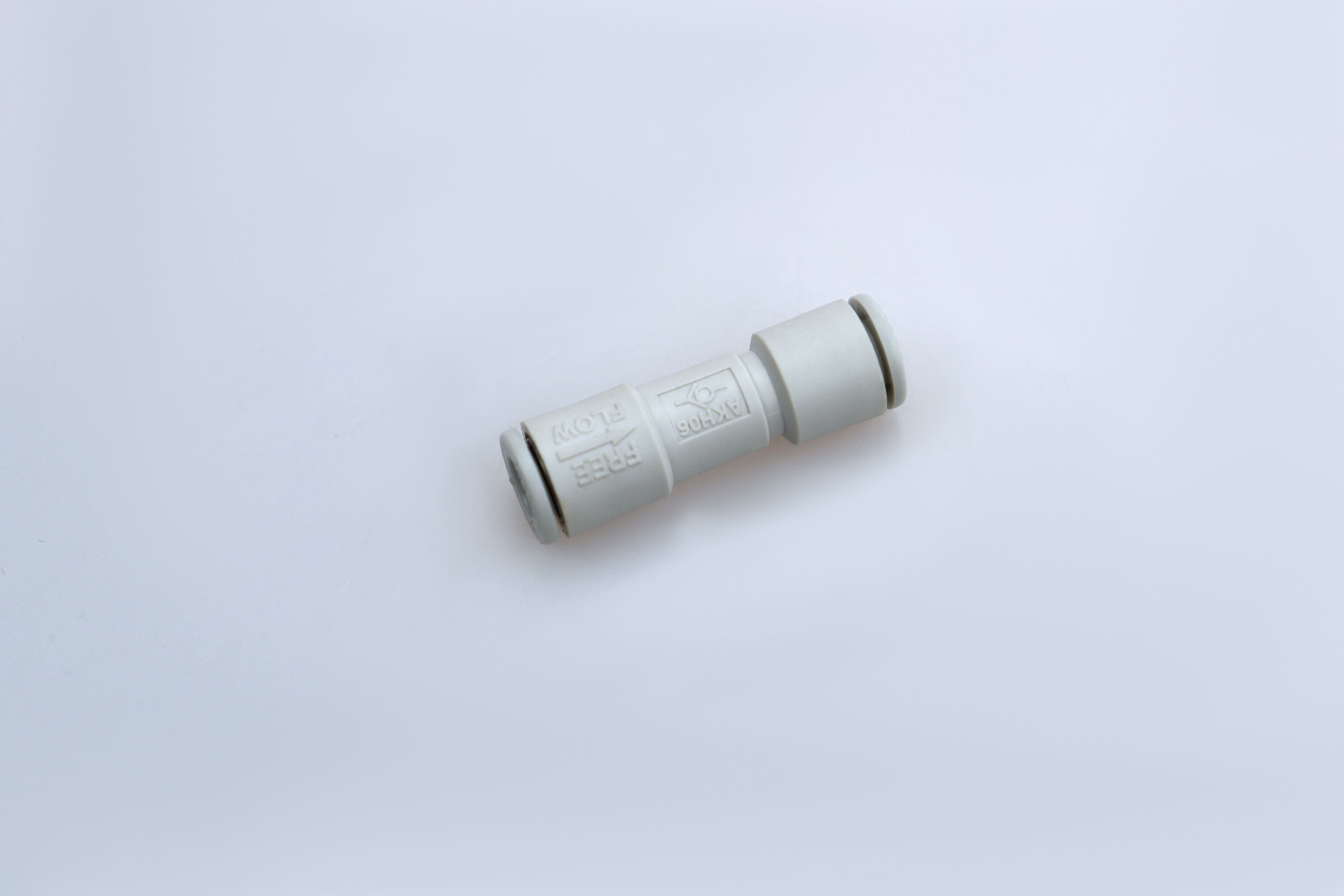Pneumatic solenoid valves are essential components in automated systems, controlling the flow of compressed air to actuators, cylinders, and other pneumatic devices. Understanding proper wiring techniques ensures reliable operation, prevents equipment damage, and maintains system efficiency. This comprehensive guide covers everything from basic electrical connections to advanced wiring configurations, helping technicians and engineers implement robust pneumatic control systems.

Understanding Pneumatic Solenoid Valve Fundamentals
Basic Operating Principles
Pneumatic solenoid valves operate by using electromagnetic coils to control air flow through internal passages. When electrical current energizes the coil, it creates a magnetic field that moves a plunger or armature, opening or closing air pathways. The valve's response time typically ranges from 10 to 50 milliseconds, making them ideal for rapid cycling applications. Understanding these principles helps technicians select appropriate wiring methods and electrical specifications for different operational requirements.
The electromagnetic coil requires specific voltage and current parameters to function correctly. Most industrial pneumatic solenoids operate on 24VDC, 110VAC, or 220VAC power supplies. The coil's electrical characteristics, including impedance and power consumption, directly influence wiring gauge selection and circuit protection requirements. Proper voltage supply ensures consistent valve operation and extends component lifespan.
Valve Types and Electrical Configurations
Different pneumatic valve configurations require specific wiring approaches. Two-way valves control simple on-off functions, while three-way and four-way valves manage more complex air flow patterns. Five-port valves often control double-acting cylinders, requiring careful consideration of electrical timing and sequencing. Each configuration presents unique wiring challenges that affect system performance and reliability.
Normally open and normally closed valve configurations determine default air flow states when power is removed. This characteristic significantly impacts safety considerations and emergency stop procedures. Understanding these operational states helps engineers design fail-safe systems that protect equipment and personnel during power failures or electrical malfunctions.
Essential Wiring Components and Materials
Wire Selection and Specifications
Selecting appropriate wire gauge ensures safe current carrying capacity and minimizes voltage drop across long cable runs. Most pneumatic solenoid applications require 18 to 14 AWG wire, depending on coil current requirements and installation distance. Stranded copper wire provides flexibility for installations involving vibration or movement, while solid core wire offers better termination stability in fixed installations.
Environmental factors significantly influence wire insulation requirements. High-temperature applications demand heat-resistant insulation materials, while outdoor installations require UV-resistant jackets. Chemical exposure considerations may necessitate specialized insulation compounds that resist specific industrial solvents or cleaning agents. Proper wire selection prevents premature failure and maintains long-term system reliability.
Connection Hardware and Accessories
Terminal blocks provide organized connection points for multiple valve circuits, simplifying troubleshooting and maintenance procedures. DIN rail mounting systems enable clean, professional installations that meet industrial standards. Cable glands and strain reliefs protect wire connections from mechanical stress and environmental contamination. These accessories contribute significantly to overall system reliability and professional appearance.
Electrical protection devices, including fuses and circuit breakers, safeguard solenoid coils from overcurrent conditions. Surge suppressors protect against voltage spikes common in industrial environments. These protective components require proper sizing and placement to ensure effective operation without interfering with normal valve function. Integration with air regulator valve systems often requires additional consideration of pneumatic and electrical interfaces.
Step-by-Step Wiring Procedures
Basic DC Wiring Configuration
DC solenoid valve wiring begins with identifying positive and negative terminals on the valve coil. Most valves include clear terminal markings or color-coded leads to prevent polarity confusion. Connect the positive supply wire to the positive terminal and the negative wire to the negative terminal. Use appropriate crimp connectors or terminal lugs to ensure secure mechanical and electrical connections.
Install a control switch or relay contact in series with the positive supply wire to enable valve operation control. The switch should be rated for the solenoid's current requirements with appropriate safety margins. Include a fuse or circuit breaker in the positive supply line, sized according to the valve manufacturer's specifications. This protection prevents damage from short circuits or coil failures.
AC Wiring Methods and Considerations
AC solenoid valves typically do not require polarity considerations, simplifying connection procedures. However, proper grounding becomes critical for safety and electromagnetic compatibility. Connect one supply wire to the designated terminal and the neutral or return wire to the opposite terminal. Ensure the electrical enclosure maintains proper grounding connection to prevent shock hazards.
AC applications often benefit from contactors or solid-state relays for switching control. These devices provide electrical isolation between control circuits and power circuits, improving safety and reducing electromagnetic interference. Size contactors appropriately for the solenoid's inrush current, which typically exceeds steady-state current by 300 to 500 percent during initial energization.
Advanced Wiring Techniques and Applications
Multiple Valve Control Systems
Complex pneumatic systems often require coordinated operation of multiple solenoid valves. Manifold assemblies consolidate multiple valves into single units, requiring careful consideration of power distribution and control signal routing. Use properly sized power supplies that accommodate simultaneous operation of all connected valves. Consider diversity factors when multiple valves operate independently rather than simultaneously.
Implement proper cable management techniques to organize multiple valve connections. Use cable trays, conduits, or wire ways to route cables safely and accessibly. Label all connections clearly using industrial marking systems that remain legible in harsh environments. This organization significantly reduces troubleshooting time and prevents wiring errors during maintenance activities.
Integration with Control Systems
Modern pneumatic systems often integrate with programmable logic controllers, distributed control systems, or industrial networks. These integrations require careful consideration of signal levels, communication protocols, and electrical isolation requirements. Use appropriate interface modules to convert between different signal types and voltage levels as required by specific applications.
Network-connected systems may require additional wiring for communication cables, power supplies, and diagnostic indicators. Follow manufacturer recommendations for cable separation distances to prevent electromagnetic interference between power and communication circuits. Implement proper shielding and grounding practices to maintain signal integrity in electrically noisy industrial environments.
Troubleshooting Common Wiring Issues
Electrical Problems and Solutions
Voltage drop across long cable runs can prevent proper valve operation or cause erratic behavior. Measure voltage at the valve terminals under load conditions to identify this issue. Install larger gauge wire or use higher supply voltages to compensate for excessive voltage drops. Consider local power supplies for distant valve installations to eliminate long cable run effects.
Loose connections create resistance that generates heat and causes intermittent operation. Inspect all terminal connections regularly and retighten as necessary. Use appropriate torque specifications provided by terminal manufacturers to ensure proper contact pressure without damaging components. Replace corroded or damaged terminals promptly to prevent system failures.
Environmental and Mechanical Factors
Vibration can loosen electrical connections over time, particularly in mobile equipment or high-vibration environments. Use vibration-resistant terminal blocks and cable strain reliefs to minimize mechanical stress on connections. Consider flexible conduit systems that accommodate equipment movement without stressing individual wire connections.
Moisture infiltration can cause coil failures and connection corrosion. Ensure proper sealing of electrical enclosures and use appropriate gaskets or sealing compounds. Install drainage provisions in enclosures that may accumulate condensation. Regular inspection and maintenance of sealing systems prevents costly failures and extends equipment life.
Safety Considerations and Best Practices
Electrical Safety Requirements
Always disconnect power before performing any wiring work on pneumatic solenoid valves. Use lockout/tagout procedures to prevent accidental energization during maintenance activities. Verify zero energy states using appropriate testing equipment before beginning work. These safety practices prevent electrical shock and protect both personnel and equipment from damage.
Implement appropriate personal protective equipment requirements for electrical work. Use insulated tools rated for the system voltage levels. Ensure adequate lighting and workspace organization to prevent accidents during installation or maintenance procedures. Training personnel in proper electrical safety practices reduces accident risks and improves work quality.
Code Compliance and Standards
Follow applicable electrical codes and standards for industrial installations. National Electrical Code requirements vary by location and application type. Consult local authorities having jurisdiction to ensure compliance with specific regional requirements. Proper code compliance protects against liability issues and ensures safe, reliable operation.
Industry standards such as NEMA, IEC, and UL provide guidelines for component selection and installation practices. These standards help ensure compatibility between different manufacturers' equipment and establish minimum safety requirements. Adherence to recognized standards facilitates equipment approval processes and insurance requirements.
Maintenance and Long-Term Reliability
Preventive Maintenance Procedures
Regular inspection of electrical connections prevents many common failure modes in pneumatic valve systems. Develop inspection schedules based on environmental conditions and operational duty cycles. Document inspection results to track component degradation patterns and optimize replacement schedules. Proactive maintenance significantly reduces unexpected downtime and repair costs.
Clean electrical connections periodically to remove contaminants that can cause corrosion or increase resistance. Use appropriate cleaning solvents that do not damage insulation materials or component markings. Apply dielectric grease to connections exposed to moisture or corrosive environments. These maintenance practices extend component life and maintain system reliability.
Performance Monitoring and Optimization
Monitor solenoid valve current consumption to identify developing problems before complete failures occur. Increasing current draw may indicate coil deterioration or mechanical binding issues. Decreasing current might suggest poor connections or supply voltage problems. Regular monitoring enables predictive maintenance strategies that minimize operational disruptions.
Document system modifications and wiring changes to maintain accurate as-built drawings. Update maintenance procedures to reflect system improvements or component changes. Maintain spare parts inventories based on failure history and critical system requirements. Comprehensive documentation and planning support efficient maintenance operations and system reliability.
FAQ
What voltage should I use for my pneumatic solenoid valve
Most industrial pneumatic solenoid valves operate on 24VDC, 110VAC, or 220VAC. Check the valve nameplate or manufacturer specifications for exact voltage requirements. Using incorrect voltage can damage the coil or prevent proper operation. DC voltages typically provide faster response times and better control precision, while AC voltages are often more readily available in industrial facilities.
How do I determine the correct wire size for my application
Wire size depends on the solenoid coil current and cable length. Most applications use 18 to 14 AWG wire. Calculate voltage drop using the formula: Voltage Drop = 2 × Current × Resistance × Length. Keep voltage drop below 5% of supply voltage for reliable operation. Consult wire ampacity tables and consider environmental factors such as temperature and bundling with other cables.
Can I wire multiple solenoid valves to the same power supply
Yes, multiple valves can share a power supply if it has sufficient capacity. Add up all valve current requirements and multiply by 1.25 for safety margin. Consider whether valves operate simultaneously or independently when sizing the supply. Use individual fuses or circuit breakers for each valve to prevent one failure from affecting others. Proper power distribution planning ensures reliable system operation.
What should I do if my solenoid valve is not operating properly
First, verify proper voltage at the valve terminals using a multimeter. Check for loose connections, damaged wires, or blown fuses. Measure coil resistance to determine if the solenoid is functioning electrically. If electrical systems are working correctly, investigate pneumatic issues such as air supply pressure, air regulator valve settings, or mechanical obstructions. Systematic troubleshooting helps identify root causes quickly.

